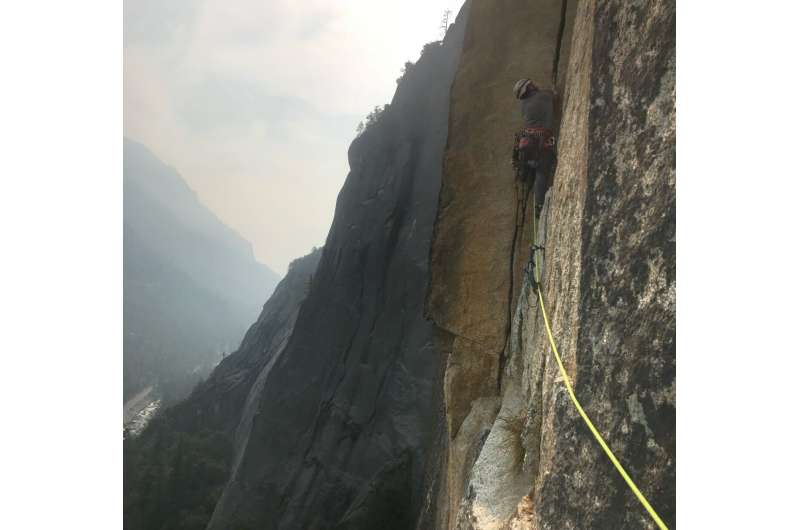This article has been reviewed according to Science X's editorial process and policies. Editors have highlighted the following attributes while ensuring the content's credibility:
fact-checked
peer-reviewed publication
trusted source
proofread
Study finds that wildfire smoke levels have yet to affect attendance numbers at US national parks

More Americans than ever are heeding the call of the outdoors—spending time recreating outside and enjoying national parks. Simultaneously, smoky skies are worsening as the size and severity of wildfires increase and adversely affect air quality across the country.
Wildfire smoke threatens human health and welfare, especially if humans are exposed to smoke for long periods or while exercising—such as during a hiking trip to one of America's beloved national parks.
Matthew Clark, a doctoral student at Boise State University studying how social and environmental conditions intersect to affect how people view and value the natural world, wanted to know if wildfire smoke would discourage people from visiting national parks—especially those most affected by wildfire smoke.
In a study published in Ecosphere, Clark and colleagues showed that smoke—even a lot of smoke—wasn't enough to deter visitors. National park attendance numbers held steady regardless of the presence of even a dramatic amount of wildfire smoke.
"I have actually lived my data," said Clark. "I had driven six hours to go climbing in Yosemite. When we got there, we said, 'Well, what are we going to do? We're not going to turn around.' We stayed anyway. I am one of my own data points."
Clark and his team built upon previous research that analyzed campsite reservations and cancelations by examining overall visitation data between the years 1980 and 2019. This allowed them to see how many people came to the park, rather than just the number of people that planned to spend the night at a campground. Not everyone who comes to a national park comes to camp—many are day trippers, or even avid hikers who simply prefer sleeping indoors or going back outside the park borders at the end of the day.
They used an innovative statistical method known as breakpoint modeling to detect threshold points in data. There is, theoretically, a level at which people would stop visiting national parks due to wildfire smoke, and the team's models helped them analyze that.
"When you are planning to visit a national park, a little bit of smoke might not make a big difference, but if there's a lot of smoke, that might start to have a really dramatic effect on attendance."
If such a threshold exists, it has not yet shown up in the data in a significant way. Puzzlingly, park attendance held steady regardless of wildfire or smoky conditions.
"We have many instances in our data set where the levels of smoke in the national park, like in Redwood or Kings Canyon, were very high and at extremely dangerous levels—nearly forty standard deviations above the mean—and we still don't see visitation deviate from normal."
Clark emphasizes that this study only looked at the trends, not the potential causes of them. People visiting national parks tend to travel farther and invest more time and money than visitors to other public lands. Such people may, for example, be reluctant to change long-standing or expensive plans because of the chance of wildfire smoke.
"We don't know why people are doing what they're doing; we're just describing the trend," Clark said. "People may, for instance, be changing what they're doing when they're in the park. We know when it rains, people tend to choose different activities in response to the weather. They still come to the park, but they may change their behavior in response to the weather once they're there."
Understanding how park visitors think about smoke is important to keeping visitors safe and to planning for the future of the parks. Educating people about how to safely survive smoky periods—staying inside, engaging in less strenuous activity, limiting exposure—can help keep people continue to enjoy the parks.
"There are so many different ways to enjoy the parks," Clark explains. "People can do activities that don't rapidly increase their heart rate or breathing rate on very smoky days. Rangers and managers can monitor smoke levels at different locations throughout the park during the day and keep visitors informed of the best places to be. We just need to do a good job of informing people about smoke and providing alternative activities to keep everyone safe. Especially young people, and people who are used to vigorous outside activity—it can be hard to assess the risk."
More information: Matthew Clark et al, Increasing wildfire smoke has limited impacts on national park visitation in the American West, Ecosphere (2023). DOI: 10.1002/ecs2.4571
Journal information: Ecosphere
Provided by Ecological Society of America

















